MCALLEN, Texas — An agent-led media tour of the border this week was interrupted twice by radio calls of migrants wandering in the area. The incidents happened in the busiest area for illegal immigration along the 2,000-mile southwest border, the Border Patrol’s Rio Grande Valley Sector, which has seen the highest number of migrant apprehensions crossing into South Texas from Mexico over the past five years than any of the other eight southwest sectors.
Journalists from a handful of news outlets, including the Washington Examiner, were about five miles south of Mission, Texas, driving just east of the Anzalduas International Bridge in Granjeno to a dirt road known as Rancon Road when the agent in the SUV leading the reporters’ caravan got a call that six people, including a baby, had just been located down by the river.
The media tour’s lead driver, who spoke on background at the direction of Border Patrol, was hesitant to drive an additional few hundred feet down to the scene because he said the dirt road was difficult to pass through a week after a flood hit the area.
[Also read: ABC News crew runs into human smuggler on camera at US-Mexico border]
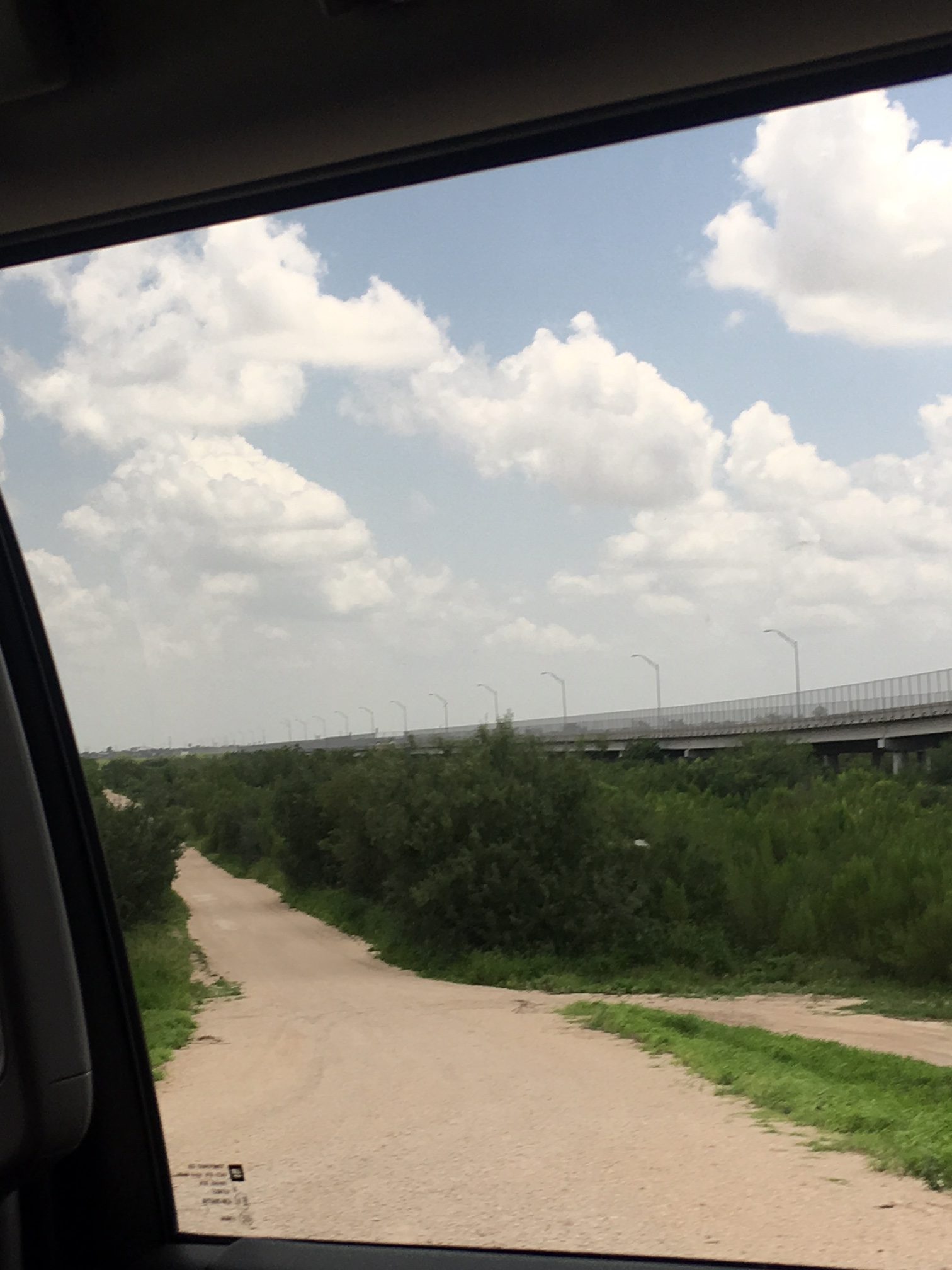
This portion of the Rio Grande Valley is heavily overgrown with trees and bushes on either side of the dirt road, but the driver agreed to go as far as he could by car so reporters would not have to walk far in the heat.
“Hope you like roller coasters,” he said as he put the SUV in four-wheel-drive mode to traverse the muddy conditions.
When flooding is not an issue, agents are stationed throughout Rancon Road and will have someone manning the road’s entrance where anyone who has crossed the river and made the trek down the dirt road can be seen coming out of the low-elevation area. The agent who led the tour said ground sensors and cameras often alert them to activity and they then respond to specific locations.
The area is a high-traffic spot for apprehensions because traffickers who lead migrants on their journeys from El Salvador, Guatemala, and Honduras part ways with the individuals they are smuggling. While they sometimes bring migrants to the south side of the river and let them cross it or take them halfway across before turning back, in this instance they were taken over in a raft thanks to scouts who alert the traffickers that agents are not watching at that moment.
“We’d be foolish to think that [the migrants are] the ones deciding where to come. The smugglers are actually determining where they’ll cross,” said Melissa Lucio, patrol agent in charge of the RGV Sector’s McAllen Station.
The caravan drove up to a crossroads where other agents had already made contact with a group of Hondurans. One woman said she was the mother of the 12-year-old girl standing next to her and another woman said the same of the year-old baby boy she held. The women were visibly shaken from having just crossed the river and been apprehended, but all were cooperative.
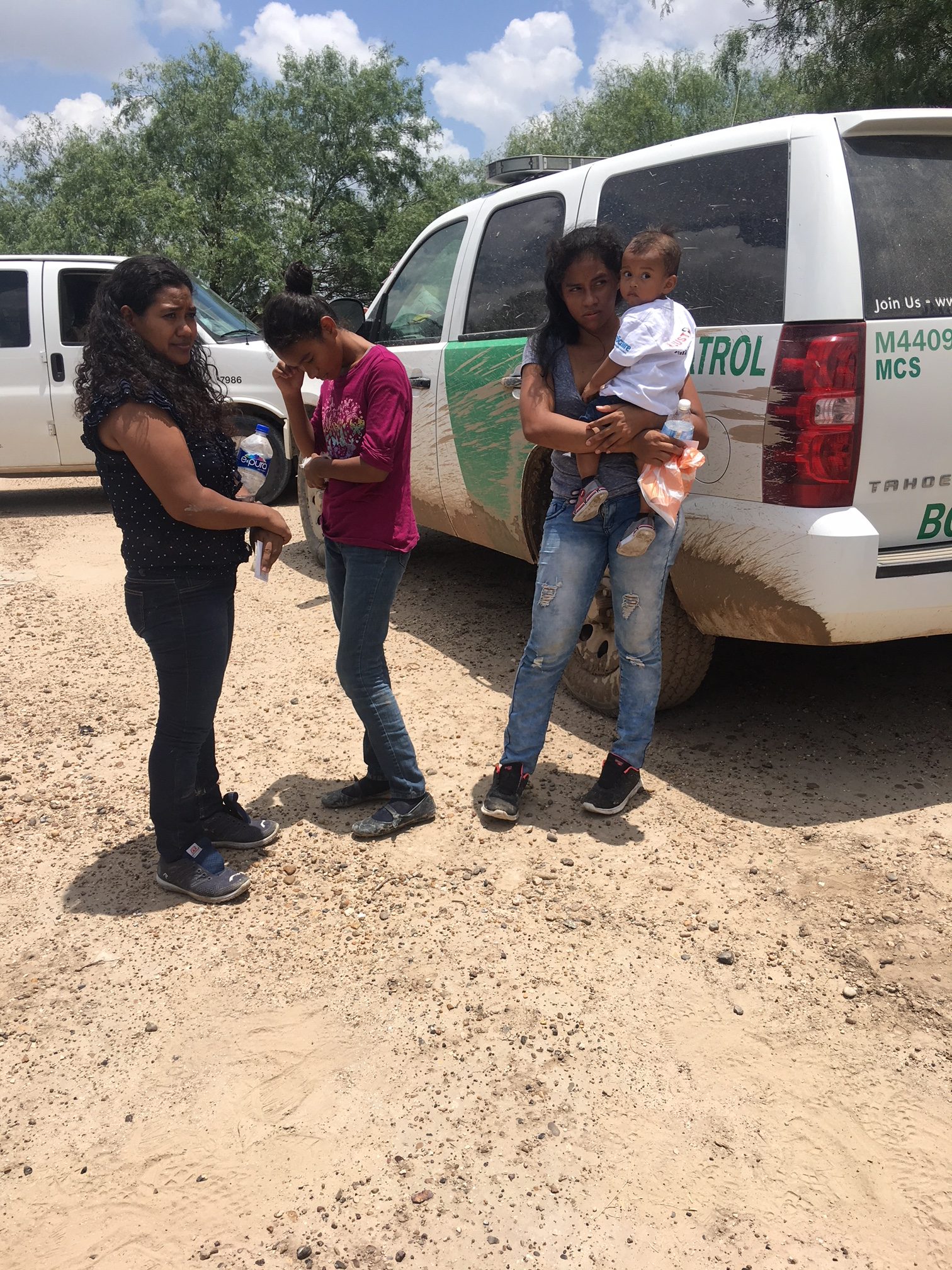
They told agents — who relayed the information to reporters — that a smuggler had taken them over the river in a raft then fled back to Mexico before authorities found them.
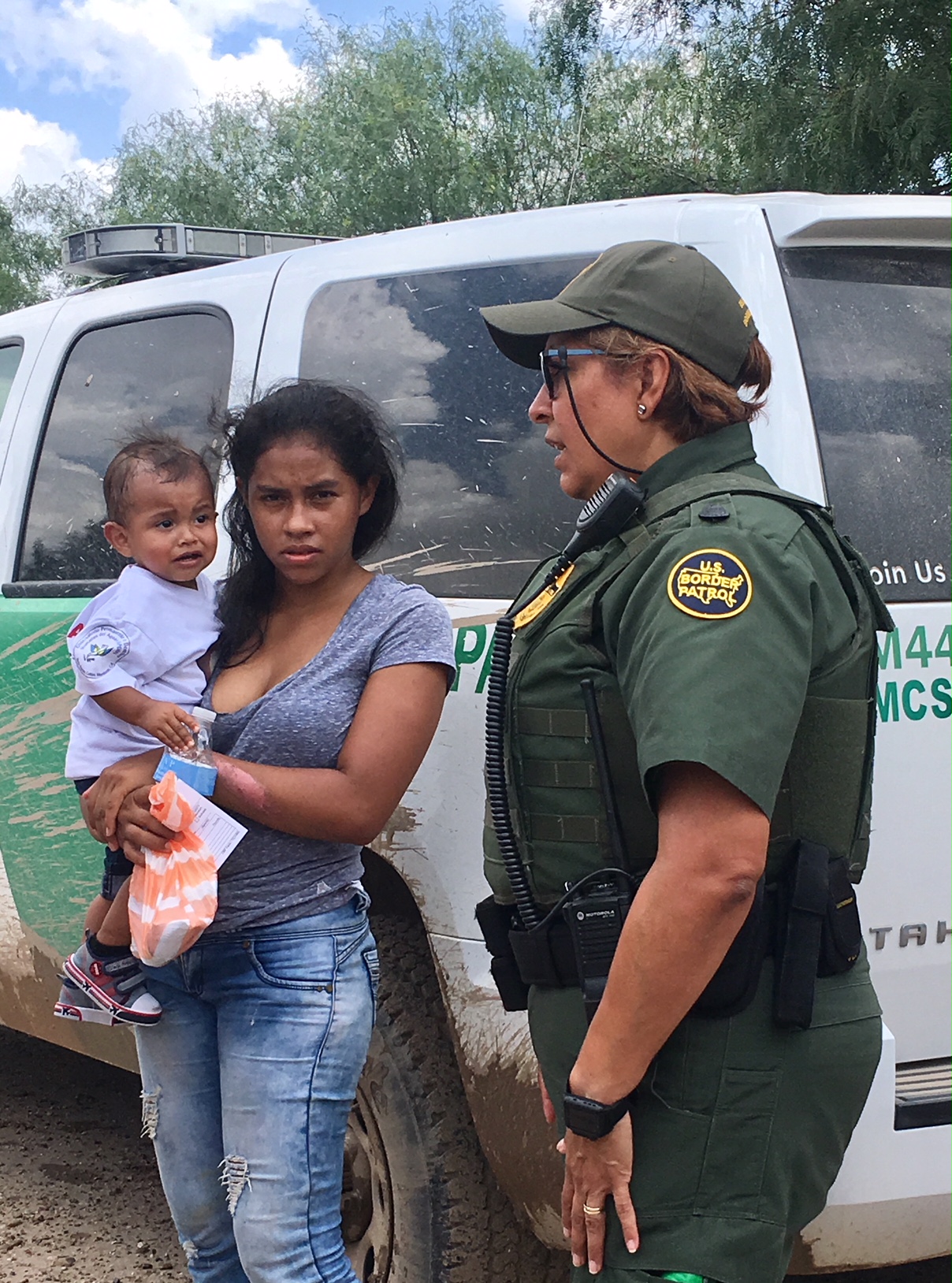
Agents loaded the people into a transport van, which would take them to the Centralized Processing Center in nearby McAllen. There they would be processed and the women likely not prosecuted following U.S. Customs and Border Protection Commissioner Kevin McAleenan’s order last Wednesday for parents to be kept with children, preventing them from being taken away and going through a legal proceeding. If the family units claim credible fear of returning to Honduras, they would go through asylum proceedings.
President Trump took executive action last week in an effort to stop separating family units apprehended between ports, a byproduct of prosecuting parents for illegally entering the U.S. McAleenan then gave the order later that day not to prosecute the majority of family unit adults because the agency did not have a way to do so while keeping families together.
As the media tour continued, the caravan was driven a few hundred feet down closer to the river and then got out of the vehicles to walk through a narrow path that led to the riverbank. One agent warned of snakes, scorpions, and ticks in the overgrown brush.
Women’s underwear, bras, bottles, and other items littered the 20-foot-long dirt path through the brush. At about 15 feet up the steep riverbank, the group could see over to Reynosa, Mexico, where young men had just gone down to their side of the water and were walking around in a shallow area.
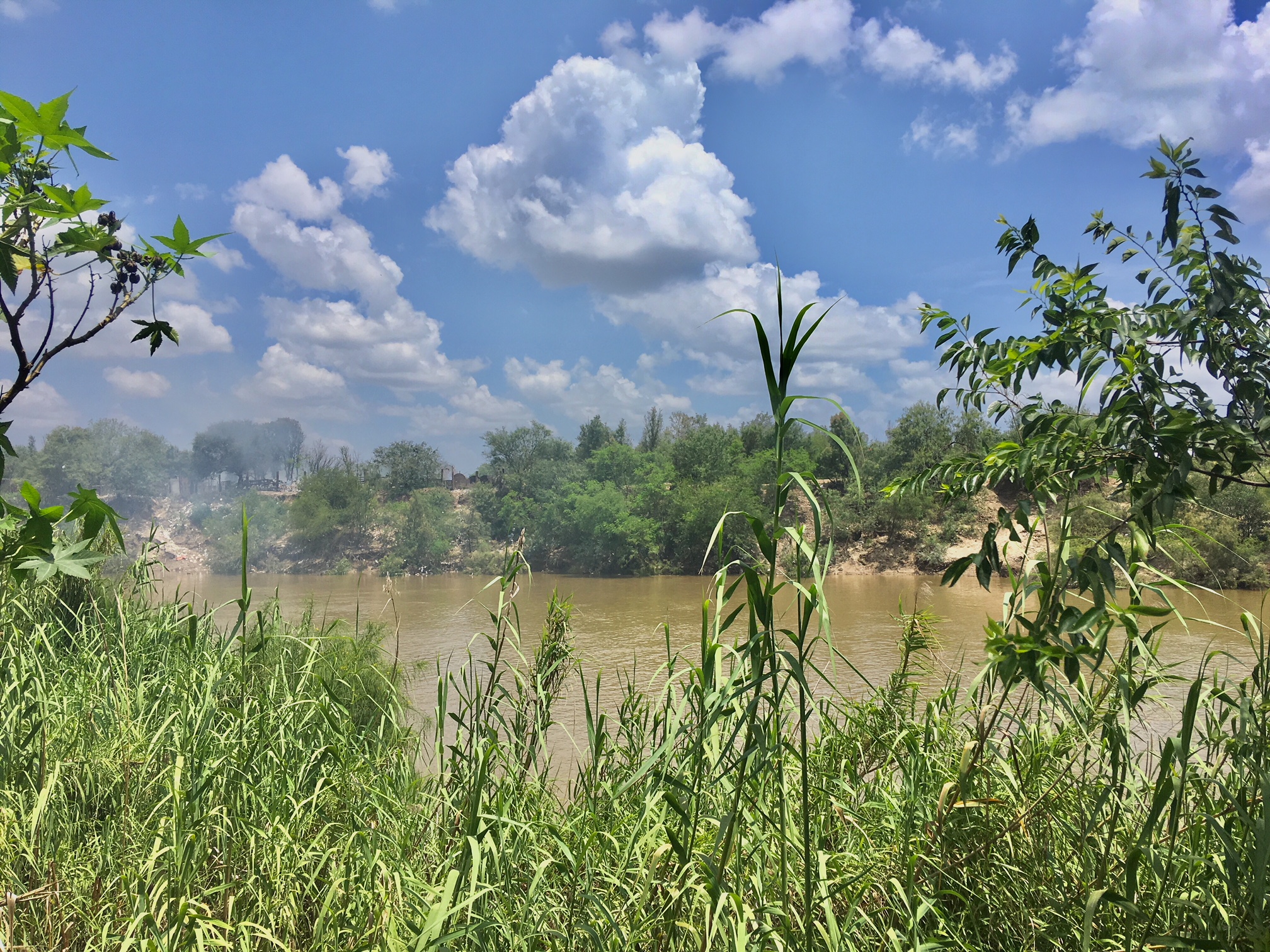
The RGV Sector is responsible for securing and responding to incidents along its 315 river miles of the border, made more difficult by the lack of paved roads. During the three-hour tour, the caravan drove on mostly dirt roads.
“There’s some areas that we can’t even get to the border, much less move laterally along the border. We need accessibility. We need the ability to move, but they need to be all-weather roads,” Lucio said. “That’s going to be critical to our success, because let’s say I do get the cameras that I need and I detect an entry, if I don’t have the ability to affect the proper response, then what good is it?”
A few miles east, along the twisting river’s adjacent roads to the Hidalgo Texas Port of Entry, one of the sector’s three ports, the caravan passed 20-foot steel gates that stood a few hundred feet apart from each other and were installed in 2009 to prevent migrants who had just crossed the river from coming up the riverbank and coming farther into the U.S.
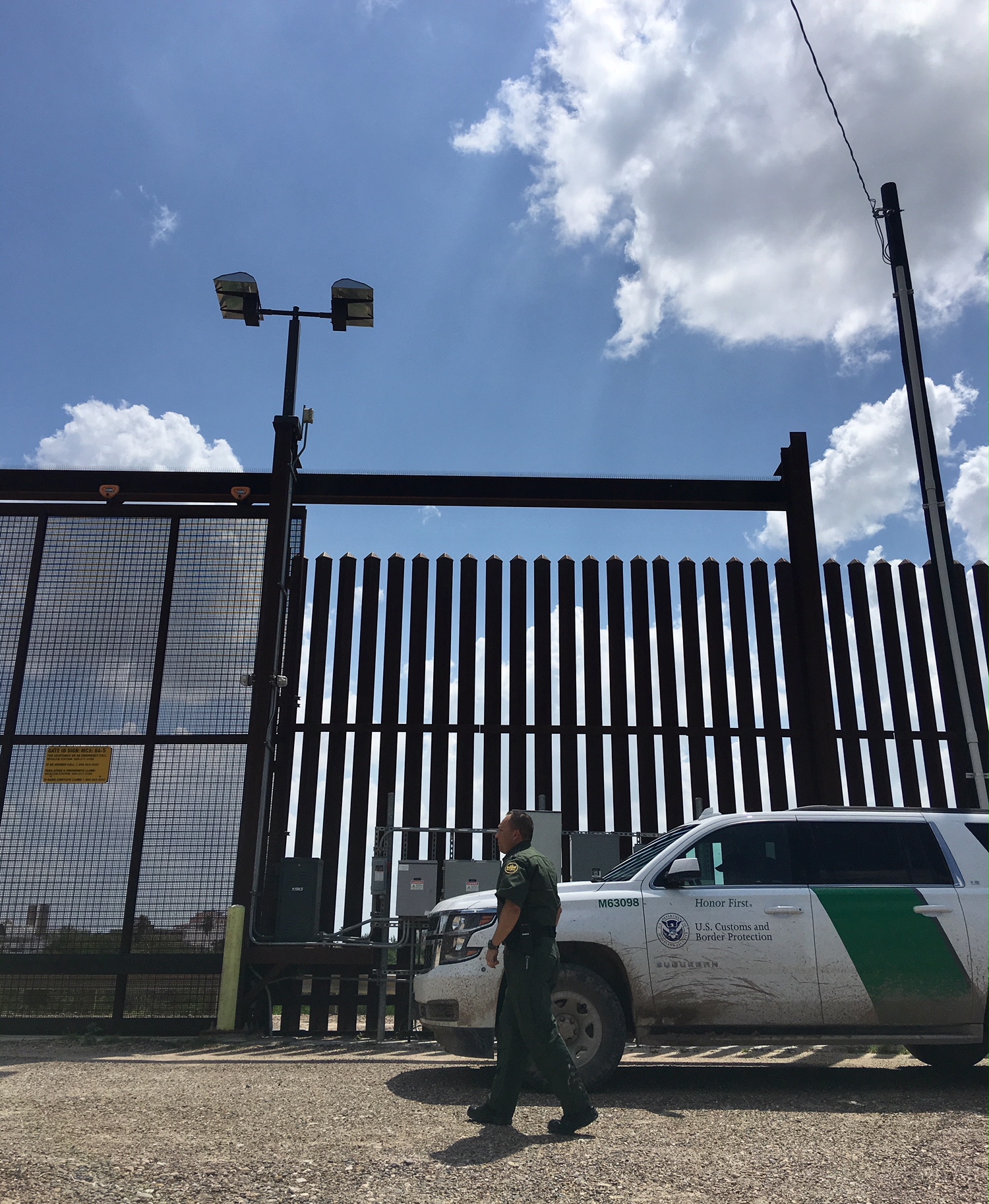
In the Rio Grande Valley, 35 new gates will be added throughout a 55-mile stretch of existing border wall in order to close “critical gaps in the current infrastructure,” U.S. Customs and Border Protection Deputy Commissioner Ronald Vitiello said in late March.
The driver in the lead SUV got out, walked over to the gate, unlocked it, and the procession moved on through and down to the water’s edge under one of the sector’s 13 international bridges linking the U.S. and Mexico. The traffic above moved slowly as agents based at the port processed vehicles seeking to enter the country from Reynosa, a city of approximately 1 million people.
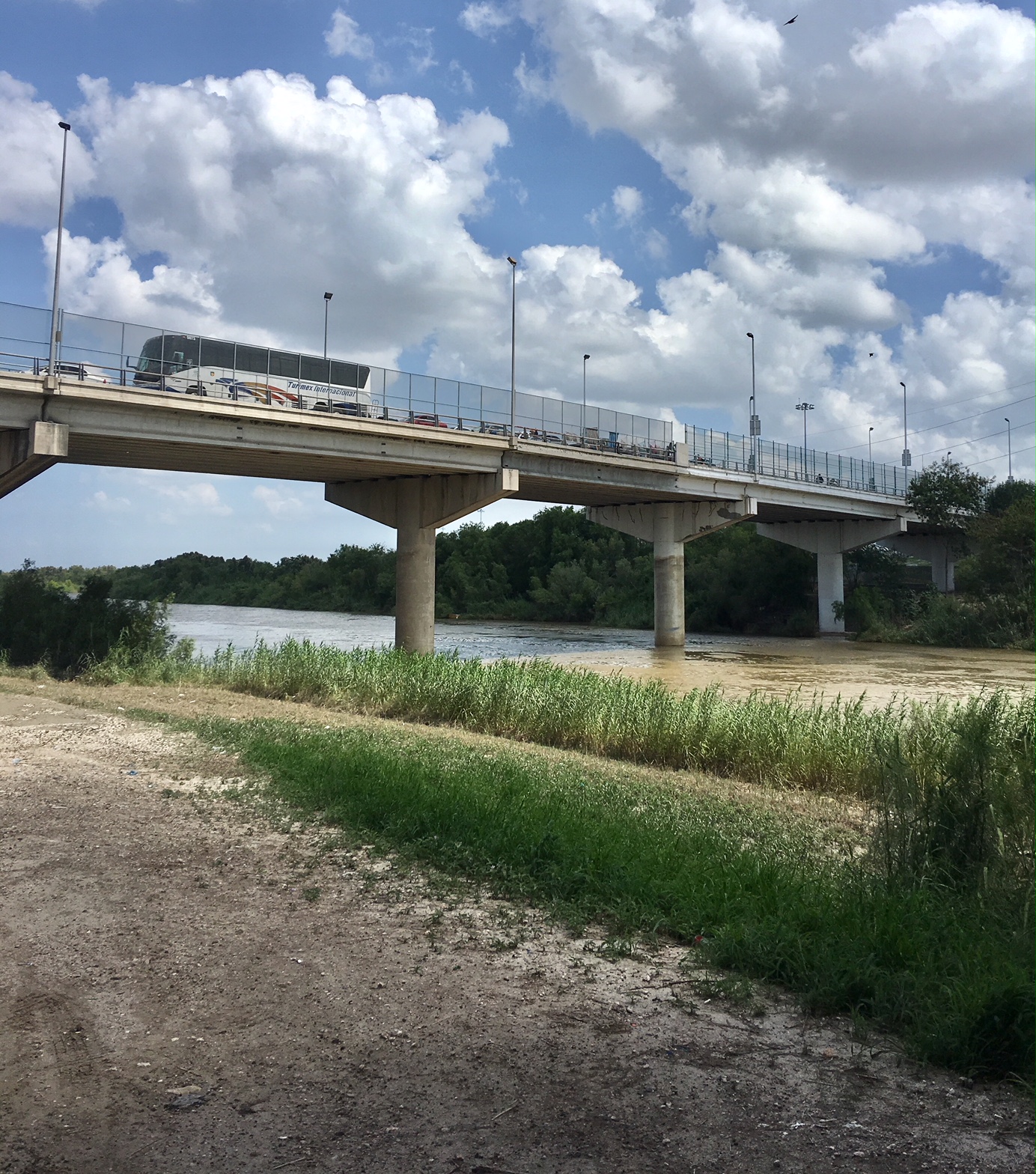
As the group turned back to head into the McAllen Station for the day, a call came over the radio of two men seen getting out of an air vent on top of a tractor-trailer less than half a mile away.
After driving over to the scene, reporters saw two men sitting inside a Border Patrol vehicle after being apprehended by agents. One of the men, a 19-year-old, told the media he had agreed to pay a smuggler $12,000 to get him to Houston where he planned to meet up with a friend.
The men, identified as Guatemalans, said they had stayed at a smuggler’s stash house in the area after entering the country. A female agent on the scene said a “concerned citizen” had called a local Border Patrol station and reported seeing two men climb down from a truck’s air vent, where the sleeper unit would normally be.
They entered the U.S. by swimming across the river, which is known south of the border as the Rio Bravo del Norte for its “furious” undercurrent.
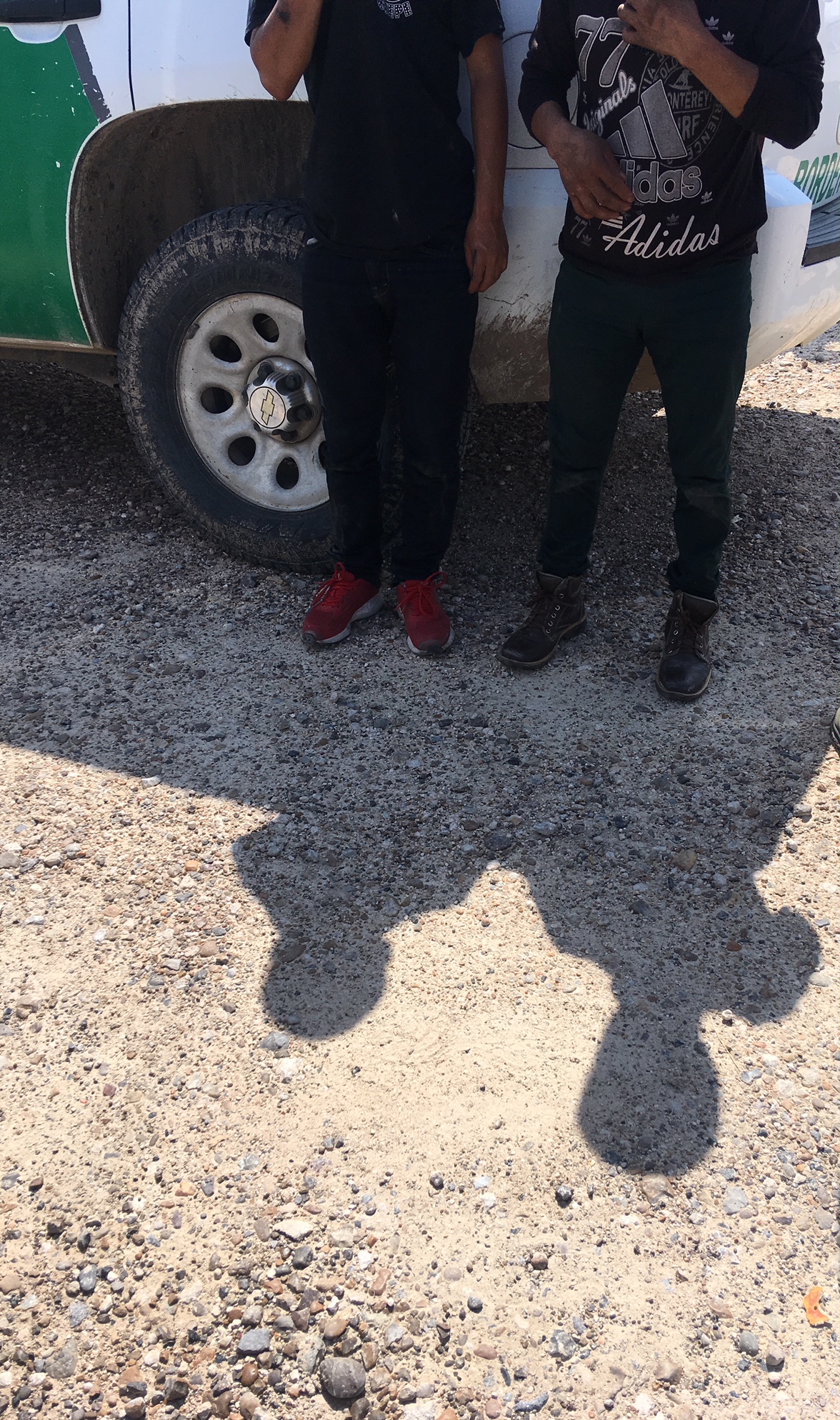
“Here lately there hasn’t been a week that has not gone by without us finding a drowned victim or even trying to rescue someone and then unsuccessfully being able to rescue them before they have drowned,” said Lucio. “It’s quite treacherous here. Of course, more so here with the recent rains — it becomes a lot more dangerous. You would think that the smugglers would slow down with all of the rain that fell over the last few days, but that didn’t slow them down. They still kept coming. They kept bringing over people and leaving them on the banks to fend for themselves.”
The amount of illegal immigration in the valley, or people entering Texas not at the sector’s three ports of entry, is a phenomenon only seen here over the past decade, McAleenan told the Washington Examiner on Monday.
Whereas adult Mexican men used to prefer illegal entry into the U.S. through Arizona, much of it has shifted to the southernmost tip of Texas, the closest entrance for Central Americans looking to leave behind poverty and violence at home for a fresh start across the border, especially if their asylum requests are approved, though 80 percent are not.
Lucio said her McAllen Station, one of nine that make up the Rio Grande Valley Sector, currently employs 650 agents, but needs nearly 50 percent more personnel to deal with this continued surge, the third migration crisis in four years.
“I would venture to say I need about 950 agents,” said Lucio. “And that’s just McAllen Station.”

